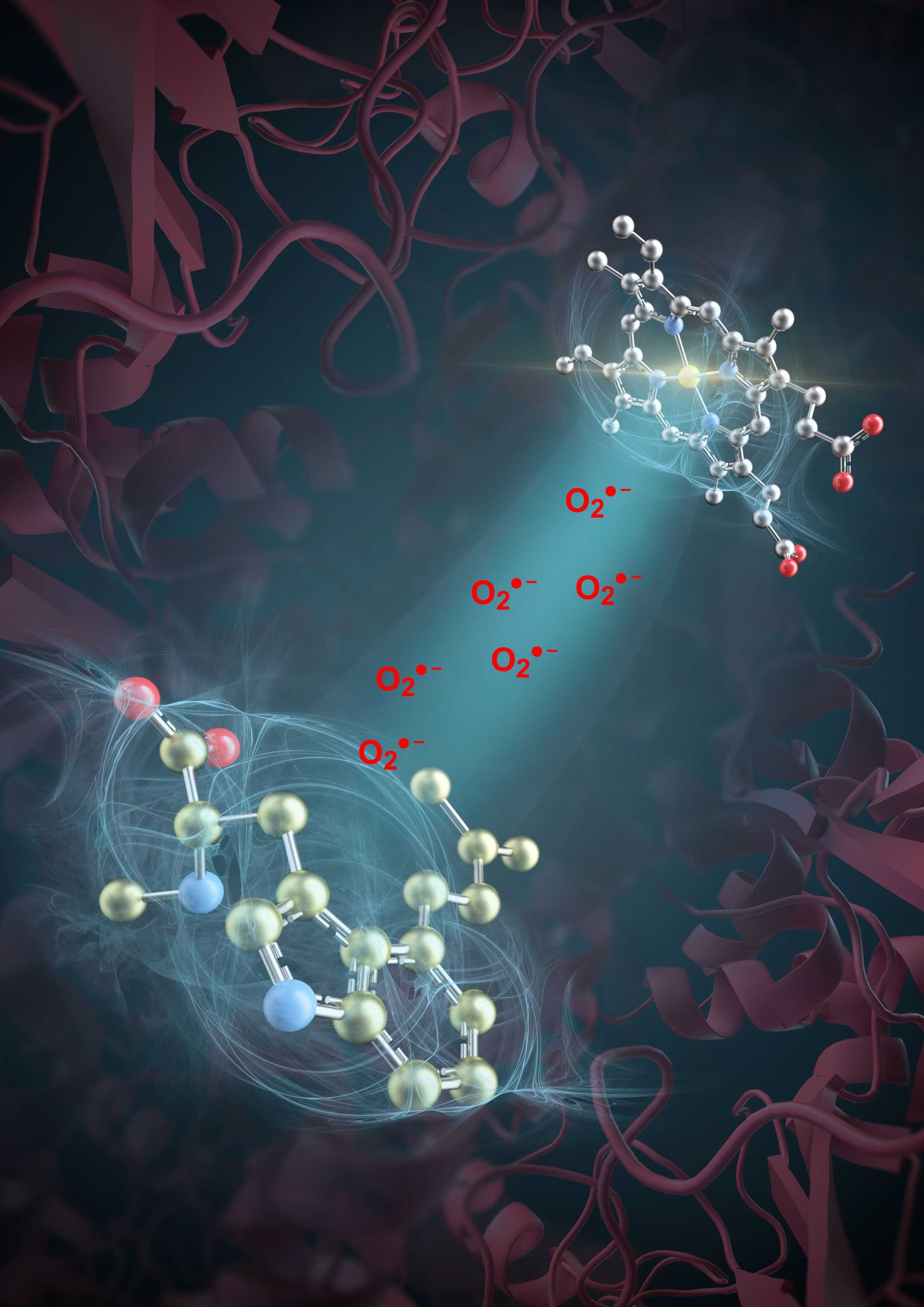Superoxide Catalytical-Role in Medicinal-Product Biosynthesis
Enzymes, as the core catalysts in life, drive critical biological processes from metabolic regulation to energy conversion. They are versatile catalytic machines honed by billions of years of evolution. In synthetic biology, enzymes not only serve as foundational building blocks for reconstructing life systems but also act as pivotal tools to transcend the limitations of traditional chemical synthesis. Functioning like micro-factories, they enable the efficient production of antibiotics, biofuels, high-value compounds, and other desired products.
Recently, scientists from the Tianjin Institute of Industrial Biotechnology, Chinese Academy of Sciences (TIBCAS), and collaborators achieved a breakthrough in deciphering enzymatic mechanism. In the findings published in Nature, they revealed the catalytic role of reactive oxygen species (ROS) superoxide (O₂•⁻) in a haem-catalase mediated synthesis of ergot alkaloids (EAs), a group of medicinal natural products for treating various diseases.
Supported by structural-biology data from a collaborative team at Hangzhou Normal University, the TIBCAS scientists discovered that haem-catalase EasC, which participates in EA synthesis, possesses two distinct "workshops": one located at the enzyme's inside haem pocket and another on its surface pocket, connected via a slender tunnel. The inside workshop produces superoxide, which is transported through the tunnel to the surface workshop where it catalyzes the conversion of substrate into the EA product through cascade radical reactions.
This "dual-workshop with a transport pipeline" enzymatic mechanism is akin to constructing two specialized facilities on a molecular scale—one producing ROS and the other synthesizing EA—while establishing a dedicated transport tunnel for ROS. This spatial segregation and transport strategy harnesses the potent reactivity of ROS while circumventing its destructive potential, showcasing the evolutionary ingenuity of microbial enzyme systems in oxygen chemistry. Remarkably, the study found that the reduction of O2 for ROS production in the haem pocket, traditionally thought to require external electron donors, is instead directly powered by the substrate here.
Superoxide, a reactive oxygen free radical generated during cellular metabolism, is commonly recognized for its bio-toxic functions, including damaging DNA, proteins, and other biomolecules. Consequently, great research efforts have focused on developing "shields" to neutralize them. However, this study demonstrated that superoxide can serve as catalytic tools for EA biosynthesis, highlighting nature's evolutionary wisdom far exceeding human imagination.
In 2024, lysergic acid diethylamide (LSD), a semi-synthetic EA, received breakthrough therapy designation from the FDA for generalized anxiety disorder, further underscoring the EA’s clinical importance. The current study could accelerate the development of cell factories for sustainable production of EAs, and offer a molecular blueprint for developing novel enzymes and redesigning natural product biosynthesis pathways. Related enzyme design may provide green, low-carbon alternatives to traditional chemical synthesis, driving a paradigm shift toward efficient and eco-friendly pharmaceutical manufacturing.

Schematic diagram of catalase generation of superoxide anion catalyzed ergot line natural drug molecule biosynthesis ( Image by TIBCAS )
Contact:
GAO Shushan
Tianjin Institute of Industrial Biotechnology, Chinese Academy of Sciences
Email: gaoss@tib.cas.cn